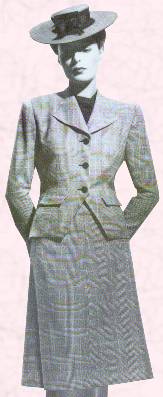VintageJess
One of the Regulars
- Messages
- 249
- Location
- Old Virginia
It seems that we often joke about our vintage shopping addictions and ever-growing collections, which led me wonder about the ladies of the actual Golden Era. What would be the size of a *typical* lady's wardrobe?
I know that whenever I have been in a home of the era, the closets are much smaller (no walk-ins!) than modern times. Also, I would think that the financial hardships of the Great Depression and rationing of World War 2 might have had major impacts on how much was purchased or made.
Would ladies have a special dress that they might wear frequently--for instance, one fancy dress for formal occasions? Was it more acceptable at that time for outfits to be worn frequently as opposed to "never see me in it twice" philosophy of many modern ladies?
Were new pieces made or purchased annually or seasonally? (For instance, a new dress for the summer, or coat for the winter.) How often were garments recycled? (I know my husband's grandmother converted her WAVE uniform into a civilian suit after the war--was that something that was fairly common?)
Jessica
I know that whenever I have been in a home of the era, the closets are much smaller (no walk-ins!) than modern times. Also, I would think that the financial hardships of the Great Depression and rationing of World War 2 might have had major impacts on how much was purchased or made.
Would ladies have a special dress that they might wear frequently--for instance, one fancy dress for formal occasions? Was it more acceptable at that time for outfits to be worn frequently as opposed to "never see me in it twice" philosophy of many modern ladies?
Were new pieces made or purchased annually or seasonally? (For instance, a new dress for the summer, or coat for the winter.) How often were garments recycled? (I know my husband's grandmother converted her WAVE uniform into a civilian suit after the war--was that something that was fairly common?)
Jessica



